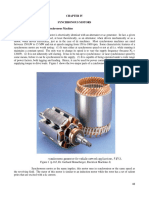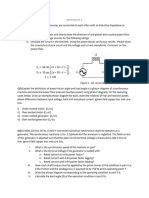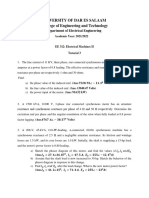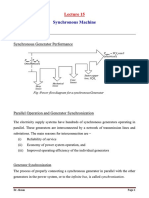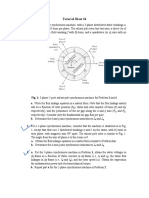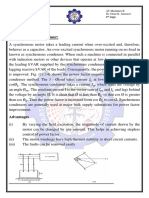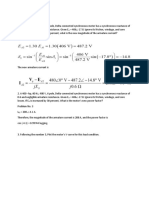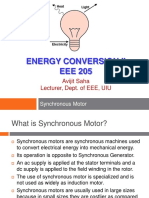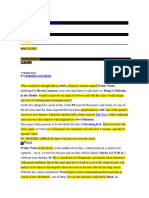0% found this document useful (0 votes)
55 views30 pagesLecture 6d - Equivalent Circuit of Synchronous Machine
This document is a lecture on synchronous machines, covering topics such as synchronous generators, motors, equivalent circuits, and power equations. It includes detailed explanations of the equivalent circuit representation, phasor diagrams, efficiency calculations, and examples illustrating the operation of synchronous machines under various conditions. The lecture is prepared by Dr. Ahmad Al-Subhi and aims to provide a comprehensive understanding of synchronous machine principles and their applications.
Uploaded by
laitouti.bahaeddineCopyright
© © All Rights Reserved
We take content rights seriously. If you suspect this is your content, claim it here.
Available Formats
Download as PDF, TXT or read online on Scribd
0% found this document useful (0 votes)
55 views30 pagesLecture 6d - Equivalent Circuit of Synchronous Machine
This document is a lecture on synchronous machines, covering topics such as synchronous generators, motors, equivalent circuits, and power equations. It includes detailed explanations of the equivalent circuit representation, phasor diagrams, efficiency calculations, and examples illustrating the operation of synchronous machines under various conditions. The lecture is prepared by Dr. Ahmad Al-Subhi and aims to provide a comprehensive understanding of synchronous machine principles and their applications.
Uploaded by
laitouti.bahaeddineCopyright
© © All Rights Reserved
We take content rights seriously. If you suspect this is your content, claim it here.
Available Formats
Download as PDF, TXT or read online on Scribd
/ 30

